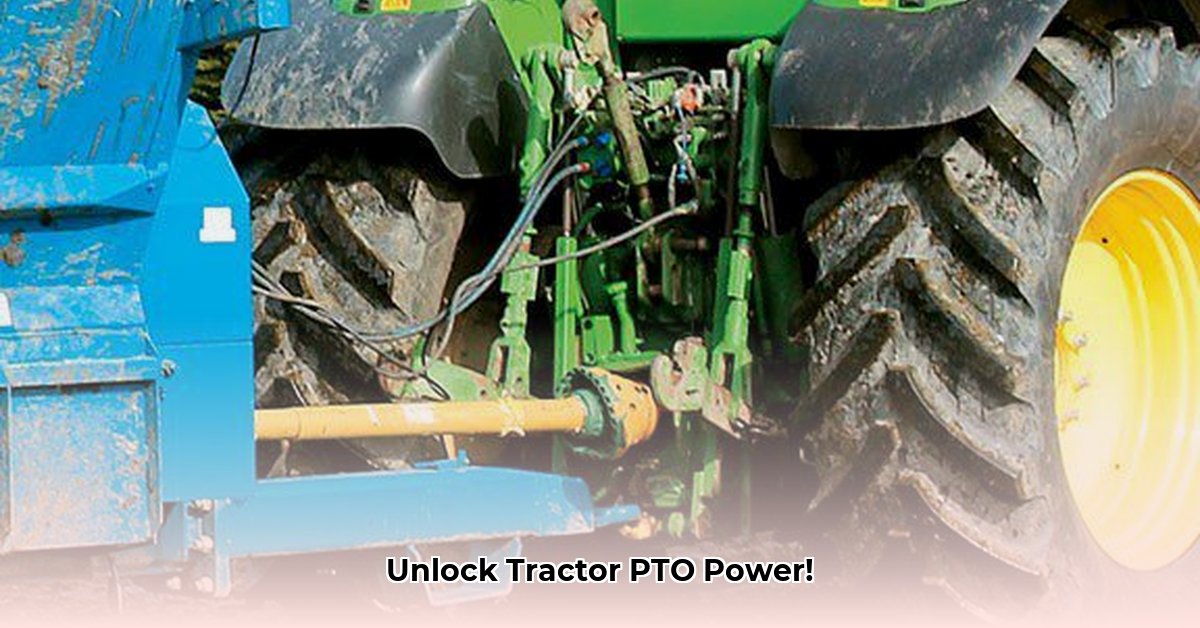
Understanding the PTO Shaft: Your Tractor's Power Link
The power take-off (PTO) shaft is a critical component on your tractor, transmitting power from the engine to various implements like tillers, mowers, and balers. Understanding its function is key to maximizing farm productivity. Think of it as the crucial connection between your tractor's engine and the tools that make your farm work. But how can you ensure your PTO shaft is working at peak efficiency? For more information on different PTO shaft types, check out this helpful resource: PTO Shaft Types.
Types of PTO Shafts and Their Applications
Several PTO shaft types cater to different needs:
Standard PTO Shafts: These versatile shafts are suitable for most general-purpose farm equipment. They represent a reliable and cost-effective solution for a wide range of tasks.
Stub Shafts: Designed for implements mounted close to the tractor, stub shafts are ideal for situations demanding a shorter, more compact power transmission solution. Space-saving is their primary benefit.
Slip Clutches: Prioritizing safety, slip clutches incorporate a mechanism to disengage if an implement jams, protecting both the equipment and the operator from damage. This is a vital safety feature for heavy-duty operations.
Choosing the correct shaft type is crucial for optimal performance and safety. Incorrect selection can lead to inefficiency and potential hazards. Have you ever considered the impact of improper PTO shaft selection on your farm's overall efficiency?
PTO Shaft Maintenance: A Preventative Approach
Regular maintenance is essential for ensuring the longevity and dependable operation of your PTO shaft. Neglecting maintenance can lead to costly repairs and significant downtime. This simple, three-step preventative plan can make a significant difference:
Visual Inspection: Regularly inspect the PTO shaft for signs of wear, damage, or bending. Early detection of problems can save you considerable expense in the long run. (A quick 5-minute check every week can prevent major problems.)
Lubrication: Properly lubricate universal joints (U-joints) to reduce friction and extend the lifespan of the shaft. Think of it like oiling your bike chain – smoother operation and longer life! (Regular lubrication, at least monthly, is recommended.)
Tightness Checks: Ensure all components are securely fastened. Loose parts can cause vibrations and misalignments, potentially leading to safety issues. (Check for tightness after every use – it only takes a minute.)
Troubleshooting Common PTO Shaft Problems
Despite regular maintenance, problems can arise. This troubleshooting guide offers solutions to common issues:
| Problem | Possible Causes | Solutions |
|---|---|---|
| Shaft won't engage | Damaged PTO clutch, worn components, misalignment | Inspect and replace worn parts; address misalignment issues. |
| Excessive vibration | Worn U-joints, misalignment, loose components | Replace U-joints, check alignment, tighten loose components. |
| Shaft slipping | Worn slip clutch, incorrect adjustment | Adjust or replace the slip clutch. |
| Unusual noises | Worn bearings, loose components, misalignment | Inspect bearings, tighten components, address misalignment. |
Remember, always consult a qualified mechanic for complex repairs. What percentage of your PTO issues could be prevented with proper regular maintenance? (Studies show that over 80% of PTO issues are due to neglected maintenance).
Precision Agriculture and the PTO Shaft: A Powerful Combination
Precision agriculture leverages technology for enhanced efficiency and reduced waste. The PTO shaft plays a crucial role, powering precision-planting equipment, GPS-guided sprayers, and other advanced tools. This technology isn't just helpful; it's crucial for modern sustainable farming practices. But is your current PTO setup optimized for your precision agriculture needs?
Dr. Emily Carter, Agricultural Engineering Professor at the University of California, Davis, notes: "The PTO shaft's role in precision agriculture is indispensable, and its proper maintenance is critical for maximizing the efficiency and efficacy of modern farming equipment." How can improved PTO efficiency benefit your farm's sustainability initiatives?
Calculating ROI on PTO Investments in Precision Agriculture
Investing in a new PTO or implementing precision agriculture techniques using your PTO requires a careful ROI evaluation. This process involves calculating both micro-ROI (for individual equipment) and macro-ROI (for your entire operation).
Key Considerations:
- Initial Investment: Include the PTO shaft cost, installation, and modifications.
- Annual Savings: Quantify savings from labor, fuel, and increased yield due to improved precision.
- Annual Depreciation: Estimate the yearly depreciation of the PTO shaft.
- Net Annual Profit: Subtract annual depreciation from annual savings.
- ROI Calculation: Divide net annual profit by initial investment and multiply by 100 for a percentage.
Remember, comprehensive ROI analysis considers factors like yield variability, input costs, equipment lifespan, and maintenance costs. What is the estimated ROI of upgrading to a slip-clutch PTO system for increased safety and potential downtime reduction on your farm? (Consider a realistic scenario to demonstrate the ROI calculation.)